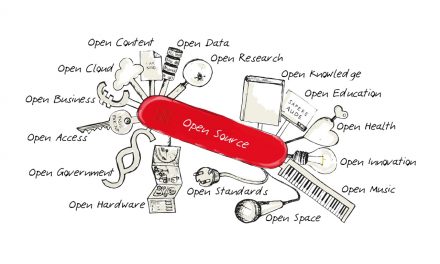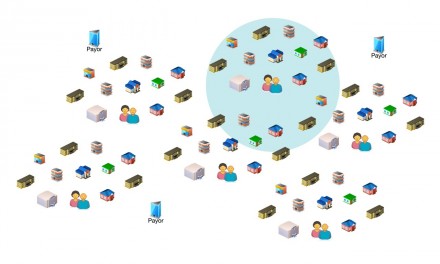Selling anything starts getting serious when it comes to qualification. For you non-sales types, qualification is an assessment of the likelihood of making the prospective sale. This assessment includes the following basic questions:
- Is the potential buyer or prospect really going to buy anything - from anybody?
- Will my product be a serious contender for the sale, or am I simply cannon fodder to help justify a sales process with a foregone conclusion?
- And if I am a serious contender, how does my product match up against the competition relative to the specific needs of this prospect?
- Who all is involved in making the decision of what to buy? (More on this in a future post on Selling Connectivity)
A common problem in markets where connectivity is new or dramatically innovative is avoiding prospects who are more interested in being educated than really buying anything. In situations like this, sales reps can get appointments to talk to prospective buyers very easily because they all hope to learn something interesting. The problem is that few of these prospects intend to buy anything, thus taking valuable time away from actually selling stuff.
Sales Strategy
The solution to this problem is an effective sales strategy. A sales strategy is like a cook book recipe that details precise steps that result in a successful sale and satisfied customer. A good sales strategy describes the quickest and most reliable process for starting with a prospect and winning the sale. Effectively selling connectivity and overcoming the qualification challenge requires a good sales strategy.
There are many ways to think about sales. One useful way is to consider how reps approach the process of winning sales. Some reps seem to feel their way to a sale with an uncanny intuitive empathy. These reps seem to have Jedi-like power over prospects, situations - even competitors. This qualitative approach contrasts with the quantitative sales rep. This rep knows how many phone calls it takes to get an appointment, how many appointments to get a demonstration, and how many demonstrations to win a sale. They take a scientific approach to sales, collecting data on sales outcomes and changing variables in a controlled manner.
When selling embedded systems, either sales approach works because the sales process is tightly focused around the characteristics of the box and the specific needs of the customer. Because connectivity deals with workflow automation beyond the device, and can be highly variable from account to account, sales reps can waste much of their time on prospects who just want education or are a poor match for the rep's connectivity solution. An effective sales strategy can quickly exclude unqualified prospects, greatly improving sales reps productivity.
Some vendors run their sales departments in a very laissez-faire fashion and some do not. Back in the day, Marquette Electronics' reps managed their sales territories like their own small businesses (the qualitative approach). Reps had tremendous latitude on how they sold their products, all they had to do was make quota. Marquette's approach contrasted with Hewlett Packard whose approach at that time was very controlled, with a detailed sales strategy consistently applied across the sales force. Both vendors were successful. Marquette succeeded mainly on the strength of their innovative products. HP succeeded on solid, but less glamorous products, and a scientific approach to sales applied consistently across the entire sales force.
Qualification
When faced with a market that's more interested in learning about new technologies than it is in buying those new technologies, vendors need a sales strategy that quickly separates the tire kickers from the serious buyers - as early in the process as possible. Someone looking to get educated will gladly take up their sales rep's time sitting through sales presentations and product demonstrations. So, after the initial sales call the next step in the sales strategy should be a qualification step, an event that clearly demonstrates the prospect's intent to buy. For example, requiring the sales prospect to include peers and management above them (who would naturally be involved in a real purchasing situation) in the qualification event. Tire kickers can rarely line up busy attendees like medical directors, the CNO and CIO just to get educated.
In the late 1980s I had the privilege of working with a master quantitative sales rep, Sam Phillis. Sam was the one that worked out the initial sales strategies at our small start up connectivity software company. We had a new solution that previously had only be available to large university teaching hospitals, and was the first such product available to "mere mortal" hospitals. After the first meeting with the department director (who was almost always interested in learning more) the next step of the sales strategy was a formal sales presentation - with a twist. The twist was that the presentation would only happen if the meeting was attended by the department's medical director, CIO and hospital administrator over that department. An unqualified prospect could rarely interest these additional attendees for something they had no intention of buying.
To ensure full participation, Sam would contact each attendee before the presentation. If any of them backed out, he would cancel the presentation. Once when I was traveling with Sam, we arrived at a hospital a couple hours before the qualification event. We visited each attendees' office to confirm their attendance. The administrator over the department told Sam that he would be unable to attend. Sam's response was to cancel the meeting - and noted that he would be investing his now free time with the hospital down the road. After picking my chin up off the floor, we went to the cafeteria for lunch - and who should come by but the administrator's admin, confirming her bosses attendance. The qualification event did come off. The administrator was late , and Sam did not start until he arrived (he may never have arrived if Sam had started without him). The hospital went on to make a purchase, from Sam.
Sam spent a major portion of his time fighting battles like this. This was the only way he could justify investing his limited time in an account, and he could only run his numbers and optimize his selling process if he consistently followed his sales strategy. Not everyone has the personality to pull off Sam's bold account management tactics, but the need to manage the sale remains.
Let's close by noting that educating the market is largely the responsibility of the vendors with the innovative products. This education is really in their best interest, because uneducated markets are slow-growth markets. While various factors can become barriers to adoption, the lack of understanding about new solutions is a frequent issue with connectivity based products. The job of educating the market falls squarely on the shoulders of marketing. The job of sales is to generate revenue, which they can't do if they're educating the market (one account at a time). Over the years I've tried many ways to educate the market (and sales reps), some worked brilliantly and some were utter failures. Hmm, sounds like a good blog post topic...
NOTE: This post was going to be about qualification, the next item on the list of Selling Connectivity topics. After digging in it quickly evolved into a discussion of qualification within the context of a sales strategy.
The next installment in this Selling Connectivity series will cover new decision makers. You can read the first of this series here.






This is an excellent post on salescraft 101. Thanks!
I never forgot about you! Discovered you again when searching my name on google… Thanks for the good thoughts in your article. You can read about me, Google Samuel or Sam Phillis or about my sailing book “A Sail and Tale of an Emotional Rescue” it will tell all where we left off back in the 80’s before I started my medical business in 1989. I will call you.
Your Friend,
Sam